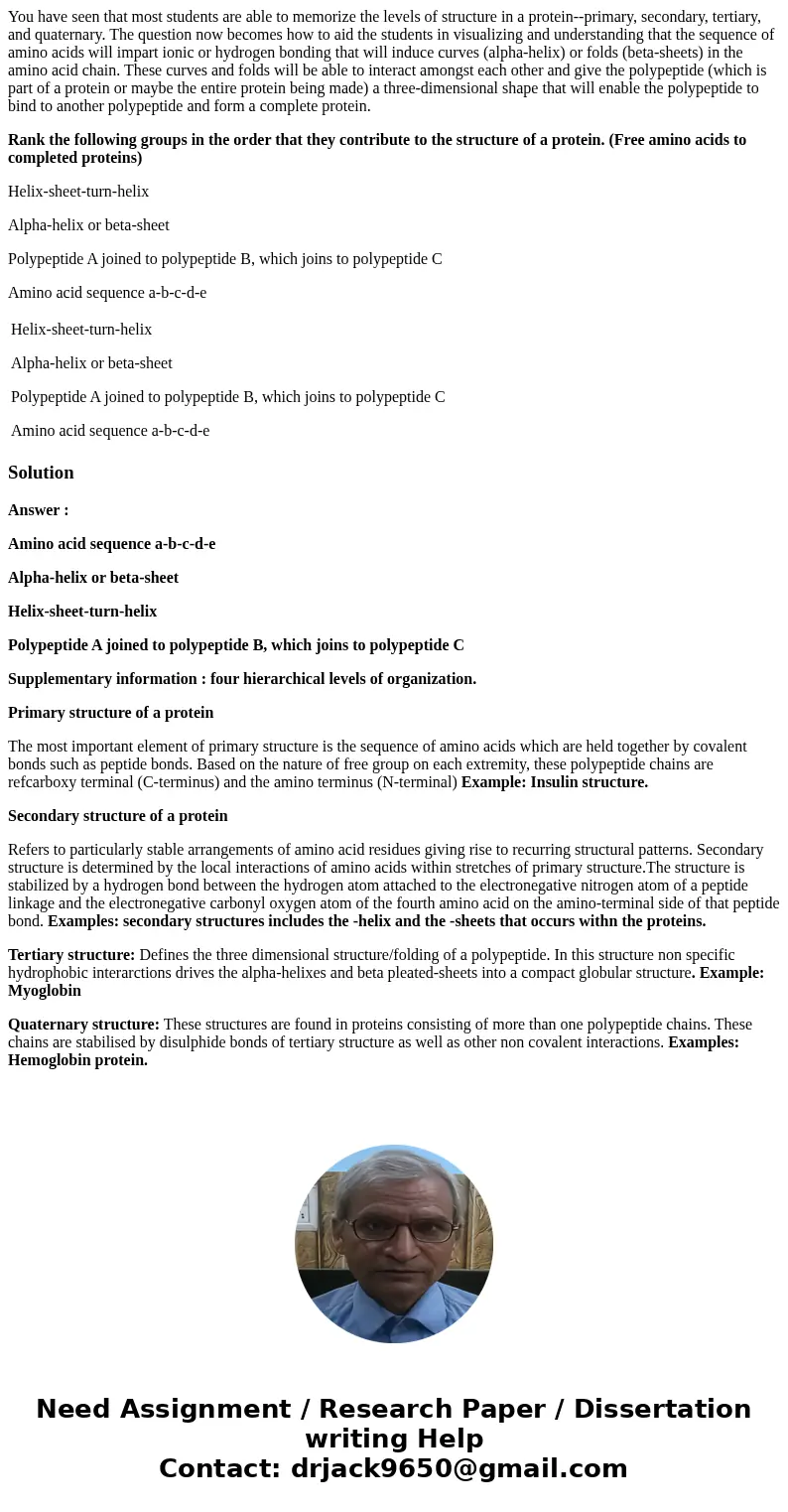You have seen that most students are able to memorize the le
You have seen that most students are able to memorize the levels of structure in a protein--primary, secondary, tertiary, and quaternary. The question now becomes how to aid the students in visualizing and understanding that the sequence of amino acids will impart ionic or hydrogen bonding that will induce curves (alpha-helix) or folds (beta-sheets) in the amino acid chain. These curves and folds will be able to interact amongst each other and give the polypeptide (which is part of a protein or maybe the entire protein being made) a three-dimensional shape that will enable the polypeptide to bind to another polypeptide and form a complete protein.
Rank the following groups in the order that they contribute to the structure of a protein. (Free amino acids to completed proteins)
Helix-sheet-turn-helix
Alpha-helix or beta-sheet
Polypeptide A joined to polypeptide B, which joins to polypeptide C
Amino acid sequence a-b-c-d-e
| Helix-sheet-turn-helix Alpha-helix or beta-sheet Polypeptide A joined to polypeptide B, which joins to polypeptide C Amino acid sequence a-b-c-d-e |
Solution
Answer :
Amino acid sequence a-b-c-d-e
Alpha-helix or beta-sheet
Helix-sheet-turn-helix
Polypeptide A joined to polypeptide B, which joins to polypeptide C
Supplementary information : four hierarchical levels of organization.
Primary structure of a protein
The most important element of primary structure is the sequence of amino acids which are held together by covalent bonds such as peptide bonds. Based on the nature of free group on each extremity, these polypeptide chains are refcarboxy terminal (C-terminus) and the amino terminus (N-terminal) Example: Insulin structure.
Secondary structure of a protein
Refers to particularly stable arrangements of amino acid residues giving rise to recurring structural patterns. Secondary structure is determined by the local interactions of amino acids within stretches of primary structure.The structure is stabilized by a hydrogen bond between the hydrogen atom attached to the electronegative nitrogen atom of a peptide linkage and the electronegative carbonyl oxygen atom of the fourth amino acid on the amino-terminal side of that peptide bond. Examples: secondary structures includes the -helix and the -sheets that occurs withn the proteins.
Tertiary structure: Defines the three dimensional structure/folding of a polypeptide. In this structure non specific hydrophobic interarctions drives the alpha-helixes and beta pleated-sheets into a compact globular structure. Example: Myoglobin
Quaternary structure: These structures are found in proteins consisting of more than one polypeptide chains. These chains are stabilised by disulphide bonds of tertiary structure as well as other non covalent interactions. Examples: Hemoglobin protein.

 Homework Sourse
Homework Sourse